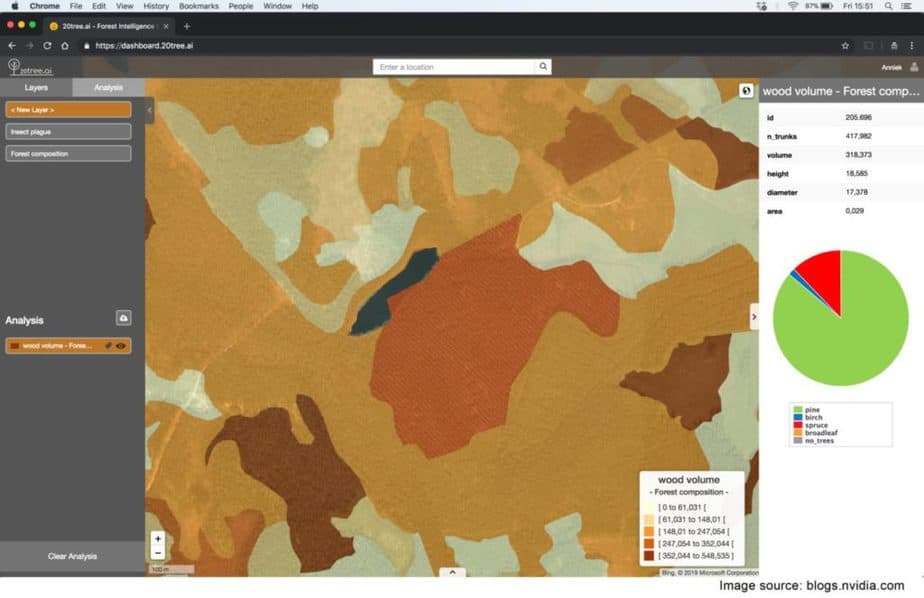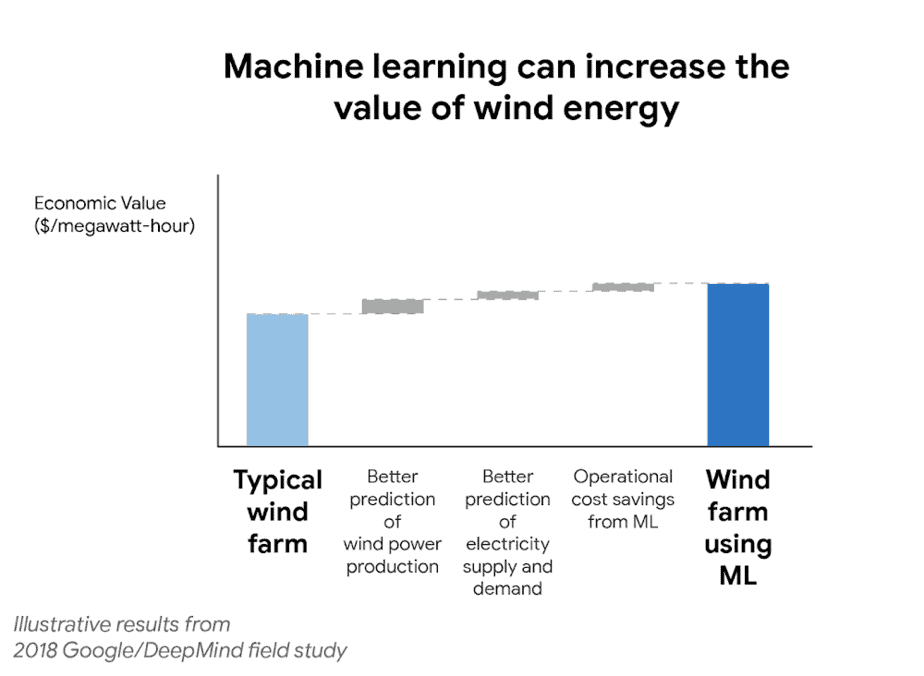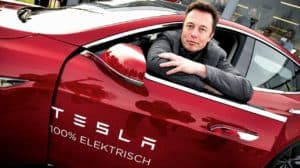
People around the world marched for climate change on September 20, 2019, with protests taking place across 4,500 locations in 150 countries, all inspired by Swedish climate activist Greta Thunberg.
It is obvious the call for a healthier planet is being demanded by more and more people internationally. But what is the answer?
One of the questions being posed: Can Artificial Intelligence (AI) and tech companies help address climate change and save the planet?
According to several experts the answer is yes. A recently published paper called “Tackling Climate Change with Machine Learning” cites leading authorities stating:
“Climate change is one of the greatest challenges facing humanity, and we, as machine learning experts, may wonder how we can help. Here we describe how machine learning can be a powerful tool in reducing greenhouse gas emissions and helping society adapt to a changing climate.
"From smart grids to disaster management, we identify high impact problems where existing gaps can be filled by machine learning, in collaboration with other fields. Our recommendations encompass exciting research questions as well as promising business opportunities. We call on the machine learning community to join the global effort against climate change.”[1]
The saying goes, "When we know better, we do better" but when it comes to climate change, to a large degree we are at the mercy of global governments that move slowly, if at all, and sometimes backwards.
As we have seen with the fires and destruction of the Amazon forests, Jair Bolsonaro is watching and denying as Brazil burns.
According to a report in BusinessInsider.com, “This year so far, scientists have recorded more than 74,000 fires in Brazil.[2] That's nearly double 2018's total of about 40,000 fires. The surge marks an 83% increase in wildfires over the same period of 2018.”[3]
Tech giant Intel Corporation (NASDAQ: INTC) rewarded research in mapping deforestation with the winner of the Intel AI Interplanetary Challenge going to a “Solution for Measuring Deforestation Using Intel AI Technologies.”
From Intel’s website:
“For her innovative solution — using AI to measure how the earth’s forests are changing over time — Rosemarie Day was named grand prize winner. Day, an IoT DevOps engineer and Intel® Software Innovator based in Hartford, CT area, proposed using Intel® AI technologies to classify plants and analyze deforestation in the Amazon rain forest using Landsat satellite imagery.
"Her solution involves building a model with classifiers for location, plant type, and deforestation using the Intel® Optimization for Tensorflow*. In addition to measuring deforestation, her concept could also be extended to datasets for identifying population growth, urbanization, and animal migration patterns.
“Inspiration for this project came from Day’s previous research on how weather changes could affect migraines and headaches in susceptible individuals. Looking at weather changes on a larger scale, along with satellite images of earth, Day suggests that population growth and urbanization can be analyzed in terms of the effects of human migration from rural to urban areas.
"By analyzing images of the Earth’s surface, alongside widely available data such as weather data and natural disasters, patterns in urbanization and deforestation could emerge based on changes of weather compared to human migration.”[4]
NVIDIA Corporation (NASDAQ: NVDA), a leader in AI development and applications, is also seeing its technology being used to survey and map forests.
In their blog, ‘Seeing the Wood for the Trees: Using AI for Smarter Forest Management,’ they report:
“20tree.ai, which was recently awarded the Copernicus Masters Planet Daily Change Challenge Award, uses a combination of AI and extremely high-quality satellite imagery and radar data to speed its work.
“Every day, the company uses NVIDIA GPUs to process almost 100TB of new satellite data — obtained from partners such as Airbus Defence and Space and the European Copernicus program — which is used to train a series of deep neural networks.
“GPUs, running in-house and in the cloud via AWS and Google, provide the muscle power for the training, enabling it to be completed in just a few hours. The deep neural networks can then draw insights into forest health that are otherwise invisible to the human eye.
“Thanks to the power of artificial intelligence and NVIDIA’s GPUs, we are enabling faster, better decision making for our planet,” said Indra den Bakker, Co-founder and Deep Learning Engineer at 20tree.ai.”[5]

You can’t talk about the role of AI without including IBM (NYSE: IBM) and Watson, their highly advanced computer system capable of answering questions posed in natural language.
Watson’s debut to the public was in 2011, winning $1 million on the game show Jeopardy, and now its machine learning technology is being utilized to analyze and solve some of the world’s biggest problems from healthcare to climate change.[6]
IBM’s technology is also playing a key role in managing the future of the Amazon forests. Forbes recently reported in an article ‘How Artificial Intelligence Could Help Fight Climate Change-Driven Wildfires and Save Lives”:
“On a tower in the Brazilian rain forest, a sentinel scans the horizon for the first signs of fire. Only these eyes aren’t human. They don’t blink or take breaks, and guided by artificial intelligence they can tell the difference between a dust cloud, an insect swarm and a plume of smoke that demands quick attention.
“In Brazil, the devices help keep mining giant Vale SA working, and protect trees for pulp and paper producer Suzano SA. In the future, it’s a system that may be put to work in California, where deadly wildfires abound.
“The equipment includes optical and thermal cameras, as well as spectrometric systems that identify the chemical makeup of substances. By linking them to artificial intelligence programs, a small Portugal-based company working with IBM Corp. wants to help tame the often-unpredictable effects of climate change.”
IBM’s AI technology is also playing several unexpected roles in solving environmental and climate change issues, including agriculture. In an article on their research site entitled ‘AI-powered technology will help farmers health-check soil and water,’ Mathias Steiner, Manager, Industrial Technology & Science, IBM Research reports:
“Agriculture consumes more than 70 percent of the world’s annual water usage. With small farms producing nearly 80 percent of food for the developing world, ensuring the quality and safety of our water supply is critical.
“My team set out to find a way to simplify the testing process and make it affordable for small farmers to monitor the health of their soil and water. Our prototype, the AgroPad, enables real-time, on-location, chemical analysis of a soil or water sample, using AI.
“This ‘AI on the edge’ computing approach uses machine learning and machine vision algorithms to translate the measured color composition and intensity into concentrations of chemicals in the sample, making it more reliable than tests based on human vision alone. Test data can be simultaneously streamed onto a cloud computing platform and labeled with a digital tag that uniquely identifies the time, location and results of the chemical analysis.
"The cloud platform allows management and integration of millions of individual tests performed at various times and locations. This is an important feature for monitoring, for example, the change in fertilizer concentration in a particular region throughout the year.”[7]

Microsoft Corporation (NASDAQ: MSFT) has started AI for Earth as part of Microsoft’s AI initiative for environmental innovation.
Their technology is also being used for agricultural efficiencies. According to their website:
“Ag-Analytics uses sensors to collect soil, tillage, and yield data for specific plots of farmland. The data is stored in Microsoft Azure and made available to farmers via user-friendly APIs to help them lower costs, improve yields, and minimize the environmental cost of agriculture.”
From land to water, Microsoft is also partnering to protect the oceans with AI.
“OceanMind solve works with government authorities to prevent illegal, unreported, and unregulated fishing by analyzing vessel movements in real time. AI algorithms identify suspicious behavior, which OceanMind shares with agencies to direct patrol boats more effectively.”[8]
According to Google’s DeepMind, “Artificial intelligence could be one of humanity’s most useful inventions. We research and build safe AI systems that learn how to solve problems and advance scientific discovery for all.”
Alphabet Inc. (NASDAQ: GOOG) is using their expertise to make a difference in their own back yard. According to an article in Tech Republic:
“Google has also used its own AI expertise to improve its energy efficiency as a company — leveraging DeepMind's machine learning capabilities, it reduced the amount of energy needed to cool its data centers by 40%.”[9]

National Geographic reported on how Google is also playing a role in carbon tracking:
“Carbon Tracker is an independent financial think-tank working toward the UN goal of preventing new coal plants from being built by 2020. By monitoring coal plant emissions with satellite imagery, Carbon Tracker can use the data it gathers to convince the finance industry that carbon plants aren't profitable.
“A grant from Google is expanding the nonprofit’s satellite imagery efforts to include gas-powered plants’ emissions and get a better sense of where air pollution is coming from. While there are continuous monitoring systems near power plants that can measure CO2 emissions more directly, they do not have global reach.
“This can be used worldwide in places that aren’t monitoring,” said Durand D’souza, a data scientist at Carbon Tracker. “And we don’t have to ask permission.”
AI can automate the analysis of images of power plants to get regular updates on emissions. It also introduces new ways to measure a plant’s impact, by crunching numbers of nearby infrastructure and electricity use. That’s handy for gas-powered plants that don’t have the easy-to-measure plumes that coal-powered plants have.[10]
Google’s blog also reported on how machine learning can boost the value of wind energy:
“DeepMind and Google started applying machine learning algorithms to 700 megawatts of wind power capacity in the central United States. These wind farms — part of Google’s global fleet of renewable energy projects — collectively generate as much electricity as is needed by a medium-sized city.
“Using a neural network trained on widely available weather forecasts and historical turbine data, we configured the DeepMind system to predict wind power output 36 hours ahead of actual generation.
"Based on these predictions, our model recommends how to make optimal hourly delivery commitments to the power grid a full day in advance. This is important, because energy sources that can be scheduled (i.e. can deliver a set amount of electricity at a set time) are often more valuable to the grid.
“Although we continue to refine our algorithm, our use of machine learning across our wind farms has produced positive results. To date, machine learning has boosted the value of our wind energy by roughly 20 percent, compared to the baseline scenario of no time-based commitments to the grid.”[11]


Love him or hate him, Elon Musk is considered a hero by many on this planet. Tesla, Inc. (NASDAQ: TSLA) has led electric car innovation and now all the big auto makers are following in his path.
According to recent data, “the global Electric Vehicle market is estimated to grow from 3,269,671 units in 2019 to reach 26,951,318 units by 2030, at a CAGR of 21.1%.”[12]
In a recent Investorideas.com interview with well-known and quoted solar analyst, J. Peter Lynch, he said, "Elon Musk is a hero of the planet whether Tesla succeeds or not. He is the one that moved the electric car ten years of where it was going to be.”[13]
In July of this year, he also entered into an AI venture with a goal directed to combat climate change. It was announced that Microsoft (NASDAQ: MSFT) will partner with Musk’s AI research company, OpenAI, as well as Y Combinator (founded by Chairman Sam Altman) to build AI technology with a mission to ensure AI benefits all of humanity.
From the press release:
“Over the past decade, innovative applications of deep neural networks coupled with increasing computational power have led to continuous AI breakthroughs in areas such as vision, speech, language processing, translation, robotic control and even gaming.
"Modern AI systems work well for the specific problem on which they’ve been trained, but getting AI systems to help address some of the hardest problems facing the world today will require generalization and deep mastery of multiple AI technologies.
"OpenAI and Microsoft’s vision is for artificial general intelligence to work with people to help solve currently intractable multidisciplinary problems, including global challenges such as climate change, more personalized healthcare and education.
“OpenAI’s mission is to ensure that artificial general intelligence benefits all of humanity.”[14]

“ You are failing us… yet you all come to us young people for hope. How dare you! You have stolen my dreams and my childhood with your empty words.
Right here, right now is where we draw the line. The world is waking up, and change is coming whether you like it or not.”
So, as we march together with artificial and human intelligence, we need to fully adopt the motto, “If we know better, we do better.”
We can’t afford to just gather intelligence and not act on it.
Referring back to the paper, ‘Tackling Climate Change with Machine Learning,’ AI is merely a tool; it is up to us to use it!
“Machine learning, like all technology, does not always make the world a better place — but it can. In the fight against climate change, we have seen that ML has significant contributions to offer across domain areas.
"ML can make systems more efficient (e.g. prevent electricity loss during transmission, consolidate freight, and reduce food waste). It can enable remote sensing and automatic monitoring (e.g. pinpoint deforestation, gather data on buildings, and track personal energy use).
"ML can provide fast approximations to time intensive simulations (e.g. climate models and energy scheduling models), and it has the potential to lead to interpretable or causal models (e.g. for understanding weather patterns, informing policy makers, and planning for disasters). In all these cases, we emphasize that ML is only one part of the solution; it is a tool that enables other tools across fields.”[15]
The future of investing is upon us. I’ve laid out multiple top tier public companies working to combat climate change. While these initiatives may be early going, it does demonstrate leadership, not to mention a proactive position to address climate change.

Dawn Van Zant, Contributor
for Investors News Service
P.S. To discover more opportunities in the hottest sectors in North America, sign up now to the Financial News Now newsletter to get the latest updates and investment ideas directly in your inbox!
DISCLAIMER: Investing in any securities is highly speculative. Please be sure to always do your own due diligence before making any investment decisions. Read our full disclaimer here.
[1] Tackling Climate Change with Machine Learning https://arxiv.org/pdf/1906.05433.pdf
[2] http://queimadas.dgi.inpe.br/queimadas/portal-static/situacao-atual/
[3] https://www.businessinsider.com/amazon-rainforest-experiencing-record-breaking-deforestation-2019-7
[4] https://software.intel.com/en-us/blogs/2018/09/07/rosemarie-day-wins-the-intel-ai-interplanetary-challenge
[5] https://www.ibm.com/blogs/research/2018/09/agropad/
[6] https://www.ibm.com/watson
[7] https://www.microsoft.com/en-us/ai/ai-for-earth-partners?activetab=pivot1:primaryr3
[8] https://www.microsoft.com/en-us/ai/ai-for-earth-partners?activetab=pivot1:primaryr4
[9] https://www.techrepublic.com/article/how-ai-could-save-the-environment/
[10] https://www.nationalgeographic.com/environment/2019/07/artificial-intelligence-climate-change/
[11] https://blog.google/technology/ai/machine-learning-can-boost-value-wind-energy/
[12] https://www.researchandmarkets.com/reports/4792991/electric-vehicle-market-by-vehicle-passenger?utm_source=CI&utm_medium=PressRelease&utm_code=tcswhn&utm_campaign=1274471+-+Electric+Vehicle+Market+-+Global+Forecast+to+2030%3a+Market+Volume+is+Expected+to+Reach+26%2c951%2c318+Units&utm_exec=chdo54prd
[13] https://www.investorideas.com/news/2019/renewable-energy/08061Podcast-PeterLynch-OTCQBSING.asp
[14] https://news.microsoft.com/2019/07/22/openai-forms-exclusive-computing-partnership-with-microsoft-to-build-new-azure-ai-supercomputing-technologies/
[15] https://arxiv.org/pdf/1906.05433.pdf